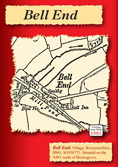Map: Ordnance Survey County Series 1:2500 – 1886

SS Great Western – the largest vessel in the world.
In 1838 after sailing to London, where she was fitted with two side-lever steam engines. the Great Western set sail for Avonmouth to start her maiden voyage to New York. The ship hadn’t gone far when a fire broke out in the engine room. During the confusion Brunel fell 20 feet, and was injured. The fire was extinguished, and the damages to the ship were minimal, but Brunel had to be put ashore at Canvey Island. As a result of the accident, more than 50 passengers cancelled their bookings for the Bristol-New York voyage and when the Great Western finally departed Avonmouth, only 7 passengers were aboard.
The Great western’s first voyage in April 1838 was set to be a race with the British and American Steam Navigation Company’s rival ship the SS Sirius but the fire delayed the Great western’s start. Even with a four-day head start, Sirius only narrowly beat Great Western, arriving in New York on 22 April. When coal ran low, the crew of the Sirius burned 5 drums of resin. The Great Western arrived the following day, with 200 tons of coal still on board. Sirius is often credited as the first winner of the Blue Riband (even though the term Blue Riband was not coined until years later) at 8.03 knots. However, Sirius only held the record for a day because Great Western’s voyage was faster at 8.66 knots.
Still capable of making record Blue Riband voyages as late as 1843. Great Western worked to New York for 8 years until her owners went out of business. She was sold to the Royal Mail Steam Packet Company and was scrapped in 1856 after serving as a troop ship during the Crimean War.
If you have an interesting story and would like to see a historical map of your area then why not let us know by emailing us.



 Cassini has decided that some of these are so spectacularly rude that they deserve wider publicity; and, to prove that they’ve existed for years and that they are real names, we’ve located each of them on a historical map and turned them into a unique set of greeting cards.
Cassini has decided that some of these are so spectacularly rude that they deserve wider publicity; and, to prove that they’ve existed for years and that they are real names, we’ve located each of them on a historical map and turned them into a unique set of greeting cards.